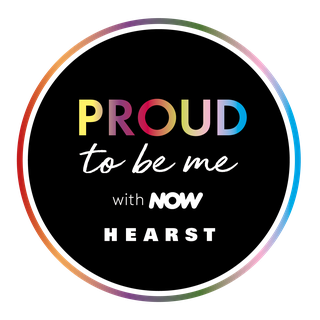How The Wire’s Omar Little challenged gay stereotypes in media – digitalspy.com
In this series, we’re highlighting the shows and movies, streaming on NOW, that have resonated with LGBTQ+ writers. Whether focused on a pioneer in queer history or a particular fictional character, this series shows how visibility can play an important part in self-acceptance
It takes three suspense-filled episodes before The Wire introduces us to Omar Little. With those expressive brown eyes and trademark facial scar, it’s an unforgettable face, with a vivid history behind it. The Wire, available to stream with a NOW Entertainment Membership, introduces us to Omar (Michael K Williams) as he is scouting the young corner boys who are running between trap houses and swiftly exchanging notes. Later on, when darkness falls, Omar will snatch both their cash and dope, shotgun in hand.
He’s a serious man in a serious world, with a Biblical righteousness that often leads to devastating violence – the warring streets of gangland Baltimore are no place for the weak or timid. Oh, and he’s openly gay.
Before Omar in The Wire, cinema and TV had a very rigid idea of what a gay man was. They were effeminate, camper than an Elton John live show and written with the laziest of stereotypes. Cultural juggernaut shows of the 90s and early noughties were very specific in how they viewed gay men, with characters high-voiced, loose-limbed and the victim of homophobic jokes. It was a subliminally effective way of limiting what gayness could be seen as.
That’s not to say these shows and characters were homophobic – they weren’t; they were just blinded to seeing gayness beyond a quirk or a predominant identity trait. These characters were gay first, everything else after. With The Wire and Omar, it’s the other way around – he’s a man who happens to be gay.
That doesn’t mean that homosexuality wasn’t important to the character; a bounty on Omar’s head is doubled after crime boss Avon Barksdale learns he’s gay, and the early murder of a boyfriend is integral to how Omar’s storyline develops in the first season.
For the first time in the mainstream (having grown in popularity since its release, The Wire quickly became iconic TV) gay men, and in particular gay black men, had someone that was actually like them. Apart from being Baltimore’s answer to Robin Hood, Omar was quintessentially ‘normal’. He was humorous, hung out with his boyfriend and smoked – the gay dream; everybody’s dream, even.
Throughout the show we get to see intimacy between Omar and his boyfriends – a rarity on TV even today. They are scenes that show the closeness of a relationship, without a shock reveal or plot twist to show two men snogging. Instead, the scene is presented in exactly the same way as if it was a man and a woman; they kiss, they cuddle, they show love to each other. It was ethereal to watch for the first time. It’s a small touch, but an absolutely vital one, especially for young men confused about their sexuality who would often be unsure as to how they could be gay when they couldn’t relate to the more camp stereotypes on screen.
Omar was larger than life, but offered a new type of character for young gay men to relate to. Gay men aren’t supposed to be violent, let alone the most feared man in all of Baltimore. While gay men were usually the butt of jokes when it came to their fighting ability, Omar challenged that perception, as well as the idea that homosexuality should be a taboo. With a swaggering cool – dressed in a trench coat, Kevlar bulletproof vest and do-rag – a deep-voiced drawl and his own theme tune (The Farmer In The Dell), Omar was the closest thing prestige TV had to a gay superhero.
There’s a grisly moment in the first season of The Wire where the body of Omar’s boyfriend is found dead in the streets. It’s more than implied that the torture is pushed to the extreme because he is gay. Omar’s response is vengeance; his boyfriend’s murder went beyond the rules of the game and the Barksdale Crew responsible for it suffer under the barrel of his shotgun. What that told me, maybe in a warped way, is that you can only be your authentic self and nothing else. Omar is a gay man, proudly and openly, and also a stick-up boy who robs drug dealers for a living. It’s in this moment where the two facets of his being collide and he can’t escape from them.
There’s a famous line near the end of season one, uttered by Wallace (played by a very young Michael B Jordan), one of the young corner boys who shopped Omar’s boyfriend to the enforcers in the organisation: “This is me, yo, right here.” That’s what it was like for me, watching an unashamed gay man with no conflicts over his sexuality strut across the screen, destroying every stereotype built up about homosexuality in front of him.
We are what we are, and there’s no getting away from that.
NOW is proud to support LGBTQ+ stories
Stream The Wire and more world-class entertainment with a NOW Entertainment Membership
This content is created and maintained by a third party, and imported onto this page to help users provide their email addresses. You may be able to find more information about this and similar content at piano.io




